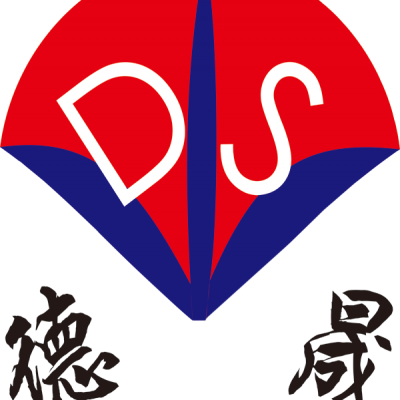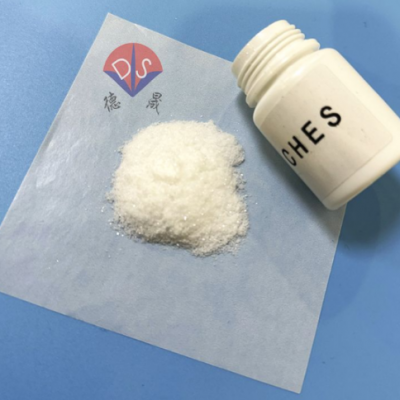Home > Products > Biological buffer > Exploring the synthesis method of the biological buffering agent sodium 2-cyclohexylamineethanesulfonate (CHES Na)
Exploring the synthesis method of the biological buffering agent sodium 2-cyclohexylamineethanesulfonate (CHES Na)
≥500 Kilograms
- Shanghai
- T/T L/C
- 5 days
You May Like
-
Low interference, high buffering efficiency: the key role of CHES 103-47-9 in molecular biology
-
Introduction to Biological Buffer CAPSO 73463-39-5
-
Introduction to Piperazine Buffer POPSO (CAS No. 68189-43-5)
-
Preparation and advantages of Tris acetate TAE as a biological buffer
-
Application of TAPSO 68399-81-5 Biological Buffer in DNA/RNA Extraction
-
Basic information of biological buffer N - (2-acetamido) -2-aminoethanesulfonic acid (ACES)
Product Details
| CAS No. | 3076-05-9 | Source | Concrete | |
| Application | Scientific Research | Usage | Analytical Reagents | |
| Specific Usage | For Biological Purpose | Content | Other, 99 | |
| Habit Appellation | Fine Chemicals | Property | Biochemical Reagent | |
| Classification | Biochemical Reagents | Grade | AR | |
| Transport Package | carton | Specification | 500g/bottle | |
| Trademark | DS | Origin | China |
Product Description
Sodium cyclohexylamine ethanesulfonate (CHES Na) is an organic salt buffering agent commonly used to maintain pH stability in biological experimental systems. Due to its excellent buffering performance and low toxicity, CHES Na has become a commonly used reagent in the field of biological sciences. Understanding its synthesis method is of great significance for ensuring the accuracy and reliability of experiments.
The synthesis steps of the biological buffering agent sodium 2-cyclohexylamineethanesulfonate (CHES Na):
1. Prepare raw materials
The main raw materials required for the synthesis of CHES Na are 2-cyclohexylamineethanesulfonic acid (CHES) and sodium hydroxide (NaOH). Ensure that the purchased raw materials meet the chemical purity standards to achieve good synthesis results.
2. Proportioning and Mixing
Calculate and weigh an appropriate amount of CHES and sodium hydroxide based on the required concentration of CHES Na. Mix the two in a beaker and stir evenly. Ensuring accurate proportioning of raw materials is the key to successful synthesis.
3. Adjust pH value
During the mixing process, the pH of the mixture is adjusted to a suitable range (usually 7.0-8.5) by adding sodium hydroxide or hydrochloric acid solution dropwise. Use an acidity meter to monitor the pH value and ensure that it fluctuates within the predetermined range.
4. Reaction and filtration
React the mixture under constant temperature conditions. During the reaction process, stirring should be maintained to promote sufficient reaction of the raw materials. After the reaction is complete, filter the product to remove unreacted solid impurities and particulate matter. Use appropriate filter paper or filter to filter and ensure the purity of the product.
5. Concentration and Crystallization
Concentrate the filtered filtrate to remove excess water. During the concentration process, temperature and pressure need to be controlled to avoid product deterioration. When the filtrate is concentrated to a certain extent, crystals can form and precipitate. The crystallization process needs to be carried out under low temperature conditions to obtain high-quality CHES Na crystals. After crystallization, centrifuge the crystals to remove excess mother liquor.
6. Drying and Storage
Dry the separated CHES Na crystals to remove residual moisture. After drying, store the crystals in a dry, dark place and ensure good sealing to prevent moisture absorption. Meanwhile, to ensure its stability, it is recommended to use CHES Na within the indicated validity period.
Precautions during the synthesis process
During the synthesis process, appropriate personal protective equipment such as chemical protective goggles, lab coats, and chemical protective gloves should be worn to ensure operational safety.
The operation should be carried out under good ventilation conditions to reduce the harm of harmful gases to the human body.
When adjusting the pH value, the acid-base solution should be added slowly to avoid local overheating of the solution or a large number of foam.
During the concentration crystallization process, it is important to closely monitor changes in temperature and pressure to avoid product deterioration or equipment damage caused by improper operation.
Waste such as used chemical reagents and filter paper should be properly disposed of according to laboratory regulations to protect environmental safety.
To ensure the smooth progress of the synthesis process, it is recommended to operate under the guidance of professionals and follow relevant laboratory safety regulations.
Hubei Xindesheng Material Technology Co., Ltd. has nearly 20 years of experience in the research of biological buffering agents. Professional technicians constantly observe market trends and actively develop products that meet customer needs. So far, Desheng can independently produce dozens of biological buffering agents with high purity, good water solubility, and good buffering performance. If you have purchasing needs, please click on the official website to learn more details!
Contact Us

- Hubei New Desheng Material Technology Co., Ltd
- Contact nameDoris Yang Chat Now
Product Categories
| Additive for blood collection | Biological buffer | Chemiluminescence reagent | Chromogenic substrate |
| enzyme preparation |
New Products
-
The pH range of N - (2-acetamido) -2-iminodiacetic acid (ADA) buffer
-
HEPBS biological buffer is a powerful assistant in cell culture and cosmetics manufacturing
-
You can't help but know about the applications of CHAPS buffer
-
Introduction and Application of Biological Buffer BIS Tris Propane 64431-96-5
-
Biological buffer piperazine-1,4-diethylsulfonic acid monosodium salt PIPES-NA basic information
-
Exploration of Buffer Performance and Stability of PIPES-K2 108321-27-3
-
2- (N-morpholine) ethanesulfonic acid monohydrate MES monohydrate
-
Characteristics and Use of TES Chemical Reagent as a Biological Buffer
-
The importance of BIS-TRIS HCl in electrophoresis, extraction, separation, and purification processes
-
3- (N-morpholine) propanesulfonic acid half sodium salt MOPS half sodium salt
-
What are the advantages of Desheng in producing 3- (N-morpholino) propanesulfonate sodium salt (MOPS-NA)?
-
Introduction to MOPSO Sodium 79803-73-9 Biological Buffer
-
Advantages of TOOS 82692-93-1 over other chromogenic substrates
-
Advantages and Preservation Details of TOPS Reagent 40567-80-4 for Chromogenic Substrate
-
Possible interfering factors of color change in ADOS 82692-96-4 substrate
-
Introduction to chromogenic substrate ADPS 82611-88-9
-
Application of ALPS 82611-85-6 chromogenic substrate in nucleic acid detection
-
Preparation and Use of New Trinder's Reagent DAOS 83777-30-4 Solution
-
The multifaceted applications of HDAOS 82692-88-4 as a chromogenic substrate
-
Application of MADB 209518-16-1 in Serum Muscle Enzyme Detection Kit
-
Application of MAOS 82692-97-5 in In Vitro Diagnostic Kit
-
The role of chromogenic substrate TODB 127544-88-1 in triglyceride detection
-
Advantages and characteristics of the chromogenic substrate DA64 (115871-19-7)
-
Performance characteristics and usage instructions of color developing substrate DA67 115871-18-6
Popular Searches
- sodium hypochlorite
- naclo
- hypochlorite
- calcium hypochlorite
- calcium salt
- potassium butyl xanthate
- calcium sodium
- sodium hypochlorite production
- sodium process
- granule sodium
- sodium hypochlorite water
- sodium 80% powder
- lime plastering
- sodium hypochlorite disinfection
- hypochlorite sodium
- sodium granular powder
- hypochlorite production
- electrolysis sodium hypochlorite
- swimming pool salt
- sea fish aquarium
- of calcium powder
- quotation sample
- aquarium coral
- emamectin benzoate wdg
- calcium price powder
- ptf
- aqua clear
- aquarium for sea water
- aquarium jellyfish
- aquarium white coral
Recommended Products
- Sodium Molybdate Export-HOOCHEMTEC
- PAPP Sodium Metasilicate Pentahydrate Factory Price cas 66034-17-1
- Sodium Metasilicate Granular in detergent industrial
- STPP Sodium Metasilicate Granular in detergent industrial SMS-5H2O
- Cocamido Propyl Betaine 35% stability Factory Price
- Potato Dextrose Agar
- MacC /MacConkey Agar
- EMB Agar
- Tryptose
- Lecithin from egg yolk CAS:93685-90-6
- HSPC CAS:92128-87-5
- Casein acid CAS:65072-00-6
Find Similar Products By Category
- Chemicals > Chemical Reagent
Product Tags:
- Please Enter your Email Address
- Please enter the content for your inquiry.
We will find the most reliable suppliers for you according to your description.
Send Now-
 Doris Yang
Hi there! Welcome to my shop. Let me know if you have any questions.
Doris Yang
Hi there! Welcome to my shop. Let me know if you have any questions.
Your message has exceeded the limit.

- Contact supplier for lowest price
- Customized Request
- Request Sample
- Request Free Catalogs
Your message has exceeded the limit.
-
Purchase Quantity
-
*Sourcing Details
Your inquiry content must be between 10 to 5000 characters.
-
*Email
Please enter Your valid email address.
-
Mobile



